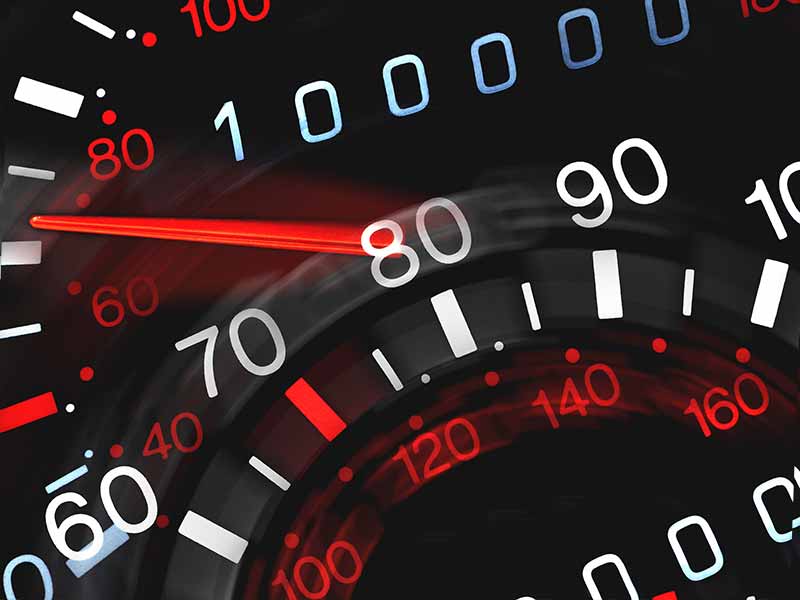Ever fitted your Silverado, F150, Ram 1500, or beloved Jeep with a fresh set of bigger, beefier size tires, only to realize that your speedometer now thinks you’re in a high-speed chase? Well, buckle up, because we’re about to venture into the exciting world of speedometer calibration!
How To Calibrate A Speedometer For Bigger Tires
Calibrating a speedometer, which can be done using a calibration tool for digital speedometers or by replacing the speedometer gear in mechanical speedometers, ensures accurate speed and distance readings despite the change in tire circumference.
In this article, we’ll dive into understanding the impact of bigger tires on your vehicle’s speedometer, explore different tools for calibrating digital and mechanical speedometers, and even discuss a handy tire size speedometer calculator.
We’ll also guide you through the steps of calibrating digital and mechanical speedometers yourself, and offer suggestions on where to get your speedometer calibrated professionally.
Let’s take a closer look.
Tire Size Speedometer Calculator
This calculator allows you to compare your original (OEM) tire size and your new tire size. This comparison will show you how different the speedometer reading would be with the new tires. Plus, it also provides measurements in both metric and imperial standards of the different dimensions for each tire.
Understanding The Effect of Bigger Tires on Your Vehicle
Alright, let’s dive right into this topic. Ever thought about what happens when you decide to strap on some larger-than-life tires to your trusty truck or Jeep? Well, there’s a lot more going on than just that beefed-up, eye-catching look.
Your vehicle’s speedometer and odometer readings are precisely calculated based on the factory-installed (OEM) tire size. This means, when you decide to go big, these readings can go, well… a bit out of whack.
How Bigger Tires Affect Speedometer and Odometer Readings
Let’s break this down into two parts:
Speedometer:
Your speedometer doesn’t actually “know” how fast you’re going. Instead, it counts how many times your tires rotate in a given time. The smaller the tire, the more rotations it needs to cover a certain distance, and vice versa. So, if you install bigger tires, they’ll rotate fewer times to cover the same distance, making your speedometer think you’re going slower than you actually are. You might think you’re cruising at a cool 50 mph, when in fact, you could be breaking the speed limit!
Odometer:
Similar to the speedometer, your odometer also measures the number of tire rotations to calculate how far you’ve driven. With larger tires, fewer rotations are needed to cover the same distance. This means your odometer will record fewer miles than you’ve actually traveled. While this might sound great for keeping your mileage low, it’s not exactly accurate, and it can cause headaches if you’re trying to keep track of fuel economy or maintenance schedules.
The Resulting Discrepancy
All this boils down to a simple fact: your actual speed and distance traveled will be greater than what your speedometer and odometer show. This discrepancy can be small or large, depending on just how much bigger your new tires are compared to the original ones.
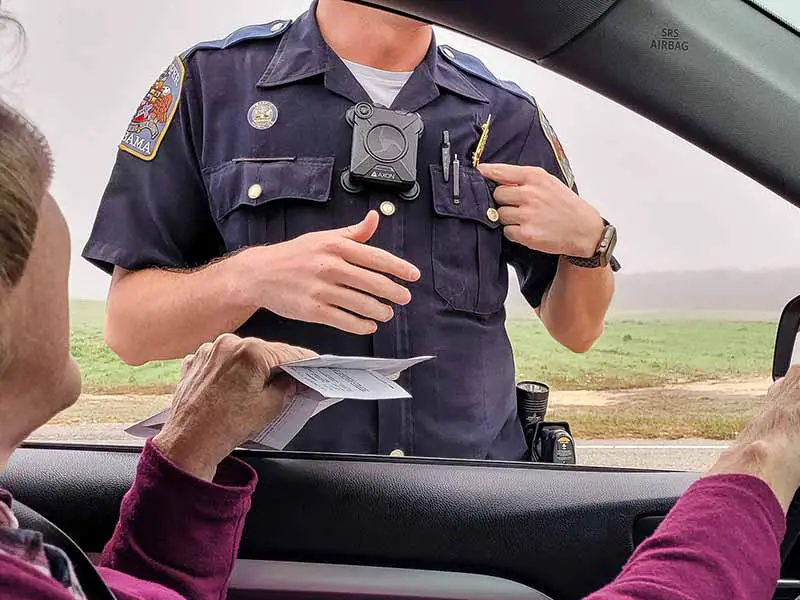
Exploring Tools for Speedometer Calibration
Alright, we’ve got the theory down pat. Now let’s get our hands a bit dirty and delve into the tools that’ll help us make these essential speedometer adjustments. Trust me, it’s easier than it sounds!
When it comes to calibrating speedometers, we’ve got two main types of tools to consider: one for digital speedometers and another for mechanical ones. Let’s break it down.
Digital Speedometer Calibration Tools
Most modern vehicles will likely come equipped with a digital speedometer. Digital speedometers are, you guessed it, entirely electronic. That means we’ll need a digital tool to make any adjustments. These tools are commonly known as “programmers” or “calibrators.”
A digital speedometer calibration tool connects to your vehicle’s OBD-II port (usually located under the dashboard) and allows you to adjust the speedometer settings. By inputting the correct tire size, the tool recalculates the speedometer and odometer readings to match the larger tires you’ve installed.
These handy devices are typically user-friendly with step-by-step instructions. They can even offer other benefits, such as improved fuel efficiency and performance adjustments. However, remember to carefully follow the manufacturer’s instructions when using these devices to avoid any potential hiccups.
Mechanical Speedometer Calibration Tools
Now, if you’re rolling in an older model Ford F150 or a vintage Jeep that sports a mechanical speedometer, the game changes slightly. Mechanical speedometers use a cable to count tire rotations instead of electronic signals. Therefore, we’ll need to manually adjust a part called the speedometer gear to correct the readings.
The gear ratio needed will depend on your new tire size. You’ll typically find this info in the vehicle’s service manual, or you could use a handy online tire size-speedometer calculator (which we’ll talk about in detail a bit later).
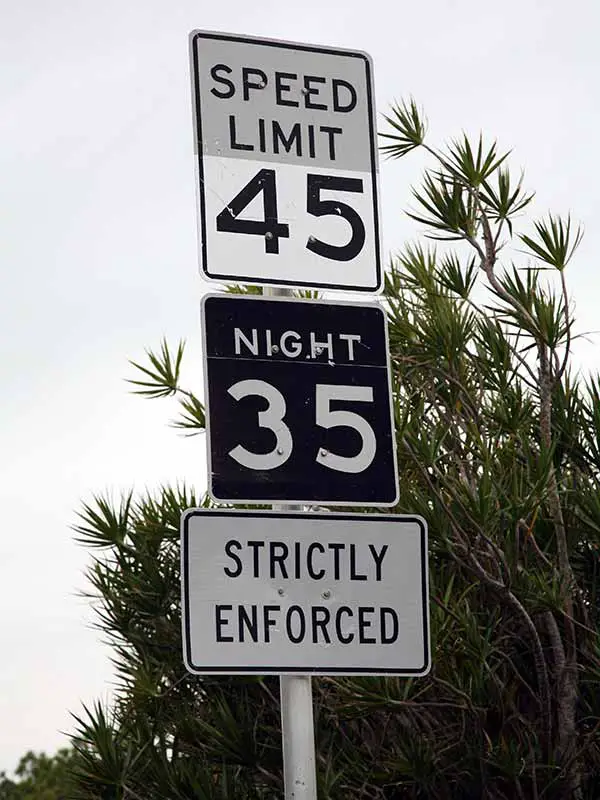
How To Calibrate A Digital Speedometer
So, you’re ready to conquer the world with your new set of larger tires? Awesome! But before we hit the road, let’s ensure your digital speedometer is calibrated correctly. Grab your digital speedometer calibration tool, and let’s get to work!
Connecting The Calibration Tool
First things first, you need to connect your calibration tool to your vehicle. Look for the OBD-II port, usually located under the dashboard on the driver’s side. Plug in the calibration tool, and it should power up.
Navigating The Tool’s Menu
Now, every calibration tool is a bit different, but they typically have user-friendly interfaces. Navigate to the menu option that allows you to calibrate the speedometer. This could be listed as ‘Tire Size,’ ‘Speedometer,’ ‘Calibration,’ or something similar.
Inputting New Tire Size
Next up, you’ll need to input the size of your new tires. Remember, we’re not just talking about diameter. The size of a tire involves three measurements: the width (how wide the tire is), the aspect ratio (the height of the tire’s sidewall as a percentage of the width), and the diameter (the size of the wheel from one side to the other). Input these values as directed by your tool.
Confirming and Saving
Once you’ve input the correct values, confirm the changes. Again, each tool will have a slightly different method for this, so be sure to follow the instructions provided with your tool. Once confirmed, save the new settings. Your speedometer should now be calibrated to your new tire size!
Mechanical Speedometers and Calibration
Alright, my friend, if you’re rocking an older model with a mechanical speedometer, this section is for you. The process here is a tad different from calibrating digital speedometers, but don’t sweat it. We’ve got you covered!
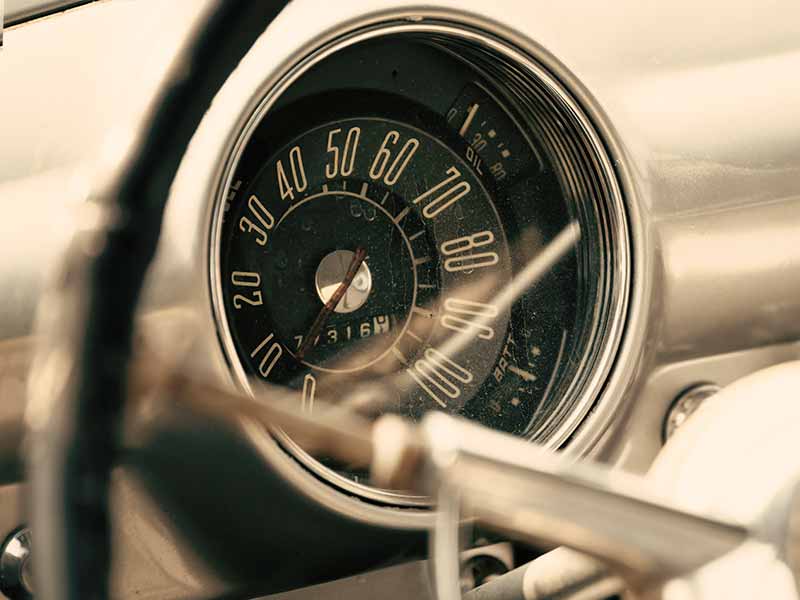
Understanding Mechanical Speedometers
First, let’s clarify what we mean by “mechanical speedometer”. Unlike the fancy electronic ones, a mechanical speedometer uses a spinning cable driven by the vehicle’s transmission. The number of spins is then translated into your speed and displayed on your dashboard. Simple, right?
The Role of The Speedometer Gear
The essential piece of kit here is the speedometer gear. This little cog inside your transmission takes the rotation from your larger tires and translates it into the rotation that your speedometer understands. If your tires get larger, the number of rotations changes, so we need to adjust this gear to compensate.
Calculating The New Gear Ratio
Now, let’s address those of you who enjoy crunching numbers and are interested in understanding the nuts and bolts of speedometer calibration. Calculating the new gear ratio for your bigger tires isn’t just about tinkering with the speedometer gear; it involves some fascinating math.
The gear ratio is determined by the number of teeth on the drive gear (the one connected to your speedometer cable) and the driven gear (the one attached to your vehicle’s transmission). But how do you figure out what gear ratio you need for your new tires? Let’s break it down.
Step 1: Calculate Tire Revolutions
Firstly, we need to estimate the number of tire revolutions per unit distance (miles or kilometers). To do this, use the following formula:
R = 20168 / D
In this equation, ‘R’ represents the number of tire revolutions, and ‘D’ is the diameter of your new tire in inches. The number 20168 is derived from the formula 63360/π, where 63360 inches equals 1 mile.
Step 2: Estimate the Gear Ratio
After determining ‘R’, we can now estimate the gear ratio for your larger tires. Use the following formula:
G = A × R / 1001
Here, ‘G’ is the gear ratio, ‘A’ is the axle ratio of your vehicle, and 1001 denotes that the speedometer is calibrated to 1 mile for 1000 revolutions. Thus, the gear ratio ‘G’ can be written as:
G = Number of teeth on the drive gear / Number of teeth on the driven gear
By calculating ‘G’, you can determine the appropriate number of teeth for your drive and driven gears to accommodate your larger tires.
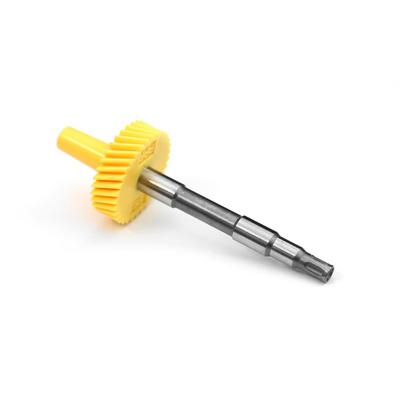
Replacing The Speedometer Gear
Now comes the fun part. Once you have the correct speedometer gear, you’ll need to replace the existing one in your vehicle. This usually involves getting under the car, locating the transmission, and physically replacing the gear. Make sure to follow your vehicle service manual or a reliable guide to avoid any mishaps.
Confirming Accuracy
Once you’ve installed the new gear, it’s time to test your work. Drive at a known speed (for example, alongside a car with a correctly calibrated speedometer or using a GPS device that shows speed) and check if your speedometer reading matches.
Using a Calibration Box
If you’re looking for an easy and efficient way to calibrate your mechanical speedometer for larger tires, using a calibration box might be your best bet. These handy devices are designed to operate a cable-driven mechanical speedometer using an electric speed signal from GPS or a modern transmission. And the best part? They can be installed in the dash or under the hood, giving you flexibility in positioning.

Speedometer Sensor Adapter Kit for Mechanical Speedometer Gauges
These calibration boxes are essentially plug-n-play devices that only require a 12-volt connection and a ground. There’s no need for calibration or subscription services, making them a hassle-free option for speedometer calibration.
The drive output thread of these boxes is typically a standard size, like 7/8″-18, with a drive output square around 0.112″. These boxes can be calibrated to a wide range of turns per mile, accommodating various tire sizes and gear ratios. Many are pre-calibrated for US speedometers at a standard rate of 1000 turns per mile, meaning you won’t need to perform any calibration if that’s suitable for your setup.
Calibration boxes can work with several different signals, including GPS and a vehicle speed sensor (VSS). A GPS signal, for example, automatically calibrates the device using the included GPS antenna.
Where Can You Get Your Speedometer Calibrated?
Alright, we’ve learned how to calibrate our speedometers and understand the need for it. But what if you’re not comfortable doing it yourself or simply don’t have the time? No worries! There are plenty of places where you can get your speedometer calibrated.
Auto Repair Shops
The most common place to get your speedometer calibrated is at your local auto repair shop. Most shops have the necessary equipment and knowledgeable technicians who can get the job done. Some shops might even specialize in larger vehicles like pickup trucks and Jeeps, which could be an added bonus for Ford F150, Ram 1500, and Jeep owners.
Dealerships
Your vehicle’s dealership is another great option. They know your vehicle inside and out and will likely have the specific tools needed for your make and model. Just keep in mind that dealership prices might be a bit steeper compared to local auto shops.
Specialty Speedometer Shops
Believe it or not, there are shops that specialize solely in speedometers! These shops have the expertise to calibrate both digital and mechanical speedometers, making them an excellent choice if you have a vintage or uncommon vehicle model. A simple online search should help you find any nearby speedometer shops.
Mobile Calibration Services
For those of you who are pressed for time, mobile calibration services might be the perfect solution. These services come to you, whether it be your home, office, or even a campsite! It’s a convenient option, though it might come with a slightly higher price tag.
How to Choose The Right Place?
Choosing the right place for speedometer calibration largely depends on your specific needs. Consider factors like the type of your speedometer (digital or mechanical), the complexity of the job, the cost, and your personal comfort and convenience.
Resources
Below are some links you may find helpful when learning about tires
- Tire size and speedometer accuracy – Discount Tire
- How to fix your speedometer for different size tires – Road & Track
Final Thoughts
From understanding how larger tires affect your vehicle, to diving into the processes of adjusting both digital and mechanical speedometers, we’ve covered quite some ground.
Ensuring your speedometer is accurate after getting larger tires isn’t just a technical chore. It’s about safety, staying within legal speed limits, and accurately tracking your vehicle’s mileage.
Good luck and happy motoring.
